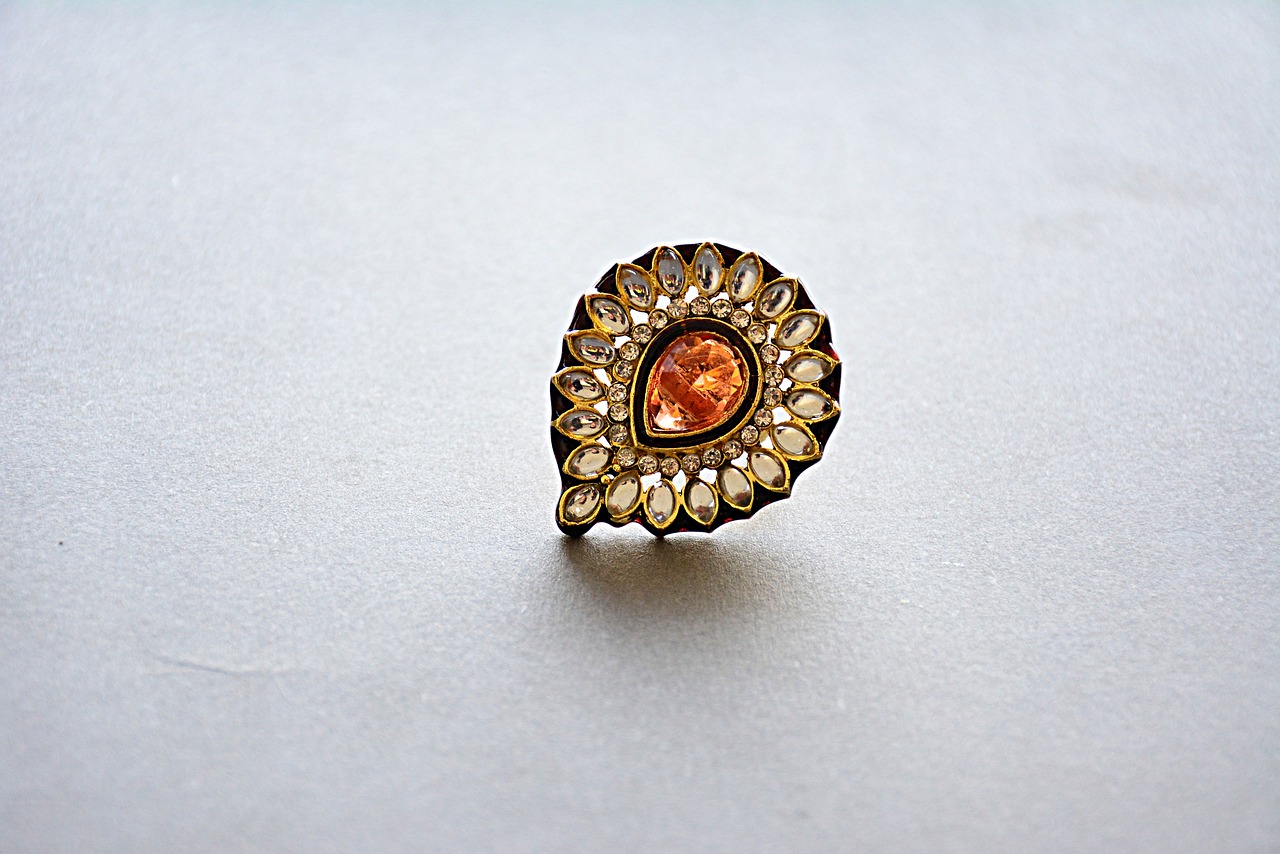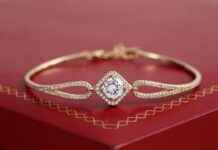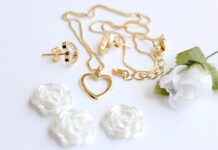This article delves into the fascinating history and evolution of jewelry, shedding light on its profound significance across various cultures and time periods. Jewelry has continuously transformed in terms of design, materials, and meaning, reflecting the values and beliefs of the societies that created it.
Ancient Beginnings of Jewelry
Jewelry’s origins can be traced back to ancient civilizations, where it served as a symbol of status, wealth, and even protection. In these early societies, jewelry was not merely decorative; it held significant cultural importance, often linked to religious beliefs and social hierarchy.
Materials Used in Early Jewelry
In ancient times, jewelry was crafted from natural materials such as bones, shells, and stones. These materials were not only accessible but also carried significant meaning within their respective cultures. The choice of materials often reflected the environment and resources available to each civilization.
The Role of Gold and Silver
As societies advanced, gold and silver emerged as the preferred materials for jewelry due to their beauty and rarity. These metals became symbols of wealth and power, with gold often associated with the divine in cultures like that of Ancient Egypt, where it was believed to connect the living with the afterlife.
Silver in Ancient Rome
In Ancient Rome, silver jewelry signified wealth and status, particularly among the elite. The use of silver not only showcased personal wealth but also played a role in social dynamics, influencing how individuals were perceived within their communities.
Gemstones and Their Meanings
Throughout history, gemstones have been incorporated into jewelry, each carrying its own symbolism. Different cultures attributed various meanings to gemstones, believing they could bring protection, love, or prosperity to the wearer.
Jewelry in the Middle Ages
The Middle Ages marked a significant shift in jewelry design, heavily influenced by religion and social status. Jewelry often featured religious symbols, serving as a form of devotion and a reflection of one’s faith.
Jewelry as Status Symbols
During this era, elaborate jewelry designs became a clear indicator of social class. Wealthy individuals adorned themselves with intricate pieces that displayed their status, reinforcing social hierarchies.
The Renaissance and Baroque Eras
The Renaissance sparked a revival in art and culture, which was vividly reflected in jewelry design. Craftsmanship advanced, leading to intricate designs that showcased the skills of artisans.
Symbolism of Love and Affection
During the Baroque era, jewelry often symbolized love and affection, with pieces designed to express romantic sentiments. This period saw a flourishing of creativity and artistry in jewelry-making.
Modern Jewelry Trends
Today, the evolution of jewelry continues, with a notable shift towards personalization and sustainability. Modern consumers are increasingly interested in ethical practices, leading to a rise in demand for sustainable jewelry options.
The Rise of Ethical Jewelry
As awareness of ethical sourcing grows, consumers are more inclined to seek jewelry that reflects their values. This shift has significant implications for the jewelry industry, promoting responsible practices.
Technological Innovations in Jewelry Design
Advancements in technology, such as 3D printing and digital design, are transforming the landscape of jewelry making. These innovations allow for greater creativity and customization, shaping the future of the industry.
Conclusion: The Timelessness of Jewelry
Throughout history, jewelry has undergone remarkable transformations, yet its core significance remains steadfast. It continues to serve as a form of personal expression and a reflection of cultural identity, ensuring its timeless appeal across generations.
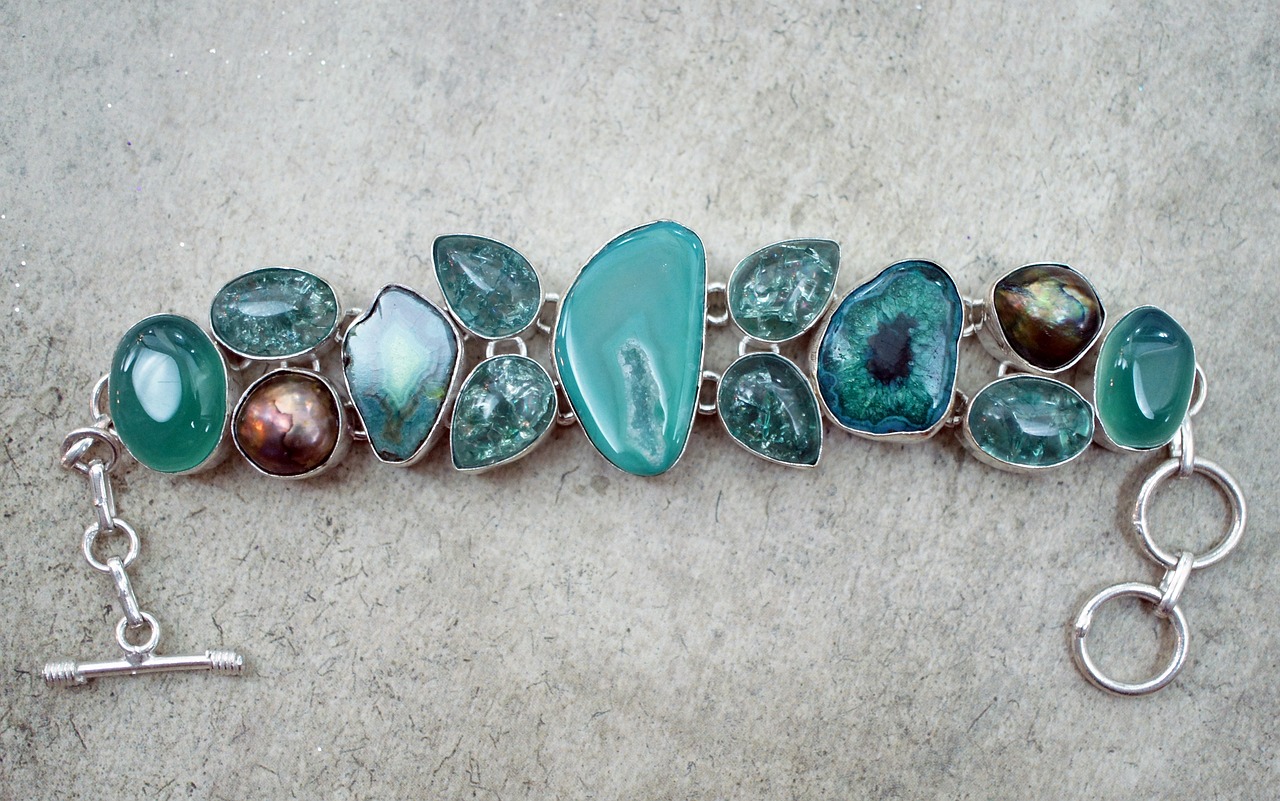
Ancient Beginnings of Jewelry
The History and Evolution of Jewelry Through the Ages
This article explores the rich history and evolution of jewelry, examining its significance across cultures and time periods, and how it has transformed in design, materials, and meaning.
Jewelry has a profound history that stretches back to the dawn of civilization. It was not merely decorative; it served as a symbol of status, wealth, and even protection for those who wore it. In ancient societies, jewelry was often crafted from materials that were readily available, such as bones, shells, and stones. These items held significant cultural importance, often representing the beliefs and values of the community.
In many ancient cultures, jewelry was imbued with spiritual significance. For example, in Mesopotamia, the use of amulets was prevalent, believed to safeguard the wearer from malevolent forces. Similarly, in ancient Egypt, jewelry was not only a display of wealth but also a means of connecting with the divine. The intricate designs and symbolic motifs of Egyptian jewelry often depicted gods and goddesses, serving both aesthetic and religious purposes.
A closer look at the materials used reveals that early artisans were skilled in utilizing whatever resources were at hand. Natural materials like turquoise, lapis lazuli, and coral were commonly used, each chosen for its beauty and believed healing properties. The evolution of jewelry-making techniques over time paved the way for more elaborate designs, leading to the creation of pieces that were not only beautiful but also rich in meaning.
As societies evolved, so did the purpose and style of jewelry. It transitioned from simple adornments to complex pieces that conveyed messages of power and identity. Understanding the origins of jewelry provides valuable insight into its cultural significance, highlighting how it has mirrored societal changes throughout history.
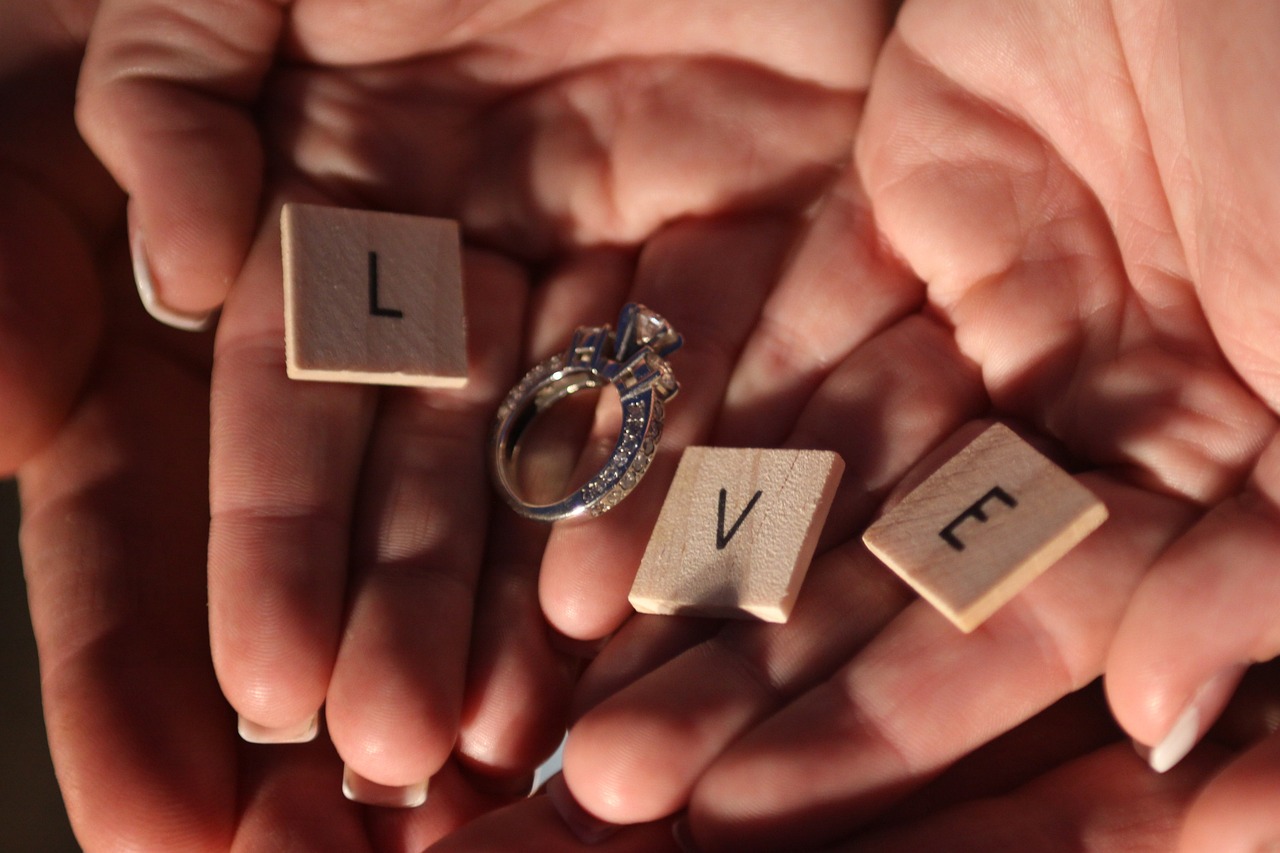
Materials Used in Early Jewelry
The use of natural materials in early jewelry is a fascinating reflection of human creativity and cultural significance. In ancient societies, jewelry was not merely decorative; it held profound meanings and was often associated with spirituality, status, and protection.
Early artisans crafted jewelry from a variety of natural materials, each chosen for its unique properties and symbolic meanings. Below are some of the most common materials used:
- Bones: Often used in prehistoric times, bone jewelry symbolized strength and survival. Artisans carved intricate designs, which were believed to offer protection.
- Shells: Shells were abundant and easy to find along coastlines. They were often used in necklaces and bracelets, representing fertility and the ocean’s bounty.
- Stones: Various stones, including turquoise, lapis lazuli, and jade, were highly valued for their beauty and believed healing properties. Each stone carried its own significance and was often associated with specific deities or natural forces.
- Wood: In some cultures, wood was carved into intricate shapes and used in jewelry, symbolizing growth and life.
These materials were not only chosen for their aesthetic appeal but also for their cultural significance. For instance, the use of certain stones was often linked to mythological beliefs and rituals. Jewelry made from these materials served as a connection to the earth and the divine, highlighting the wearer’s status within their community.
In conclusion, early jewelry crafted from natural materials reflects the values and beliefs of ancient societies. Understanding these materials and their significance allows us to appreciate the rich history of jewelry and its enduring role in human culture.
The Role of Gold and Silver
has been pivotal in the history of jewelry, serving as symbols of wealth, power, and beauty across various cultures. Their unique properties and allure have made them the materials of choice for artisans and jewelers throughout the ages.
Gold, known for its brilliance and malleability, has been utilized since ancient times. In civilizations such as Mesopotamia and Egypt, gold jewelry was not merely decorative; it was imbued with deep cultural significance. For the Egyptians, gold was associated with the gods and the afterlife, often found in the tombs of pharaohs to accompany them into the next world. This tradition reflects the belief that gold had protective qualities and could ensure a safe passage after death.
Similarly, silver has held a prestigious place in history. In Ancient Rome, silver jewelry signified status and wealth. The elite adorned themselves with intricate silver pieces, showcasing their power and affluence. Silver was also used in coinage, further solidifying its value in society. The Romans believed that wearing silver could bring good fortune and protection, making it a popular choice among the upper classes.
Throughout history, both metals have been celebrated not only for their physical properties but also for their symbolic meanings. In many cultures, gold represents eternity and purity, while silver is often associated with wisdom and serenity. This duality in symbolism has allowed gold and silver to transcend mere ornamentation, becoming integral to cultural rituals and personal identity.
In conclusion, the historical significance of gold and silver in jewelry is profound. Their enduring appeal lies in their beauty, rarity, and the rich meanings they carry across different cultures. As we continue to explore the evolution of jewelry, it is clear that gold and silver will remain at the forefront, cherished for both their aesthetic qualities and their deep-rooted cultural significance.
Gold in Ancient Egypt
In Ancient Egypt, gold was not merely a precious metal; it was a symbol deeply intertwined with the culture’s religious beliefs and views on the afterlife. The Egyptians regarded gold as the flesh of the gods, particularly the sun god Ra, which imbued it with a divine essence. This belief system is reflected in the extensive use of gold in various forms of jewelry, ornamentation, and burial artifacts.
The significance of gold jewelry in Egyptian culture can be understood through its multifaceted roles:
- Religious Symbolism: Gold was often used in religious artifacts, including statues and temple decorations, to honor the gods and ensure their favor.
- Burial Practices: The wealth of a person was often measured by the amount of gold buried with them. This practice was believed to secure a prosperous afterlife.
- Social Status: Gold jewelry was a clear indicator of wealth and power. Pharaohs and nobility adorned themselves with elaborate gold pieces, showcasing their status.
- Amulets and Protection: Many pieces of gold jewelry were crafted as amulets, believed to offer protection and bring good fortune to the wearer.
Goldsmiths in Ancient Egypt were highly respected artisans, skilled in techniques that included lost-wax casting and intricate engraving. The craftsmanship displayed in pieces such as collars, earrings, and rings revealed not only the skill of the artisans but also the cultural values of the society.
Furthermore, the discovery of tombs, such as that of Tutankhamun, has provided invaluable insights into the lavish use of gold in funerary practices. The artifacts found within these tombs highlight the Egyptians’ belief in the afterlife and the importance of gold as a means to navigate the spiritual realm.
In conclusion, gold jewelry in Ancient Egypt transcended mere adornment; it was a profound expression of religious belief, status, and the human desire for immortality. The legacy of this precious metal continues to influence jewelry design and cultural symbolism to this day.
Silver in Ancient Rome
Silver jewelry in Ancient Rome was not merely an accessory; it was a profound indicator of wealth and social status. The use of silver among the elite classes of Roman society reflected their power and influence, as silver was a precious metal that signified prosperity.
In Ancient Rome, jewelry served multiple purposes. It was a symbol of prestige, a means of showcasing one’s wealth, and often a form of personal expression. The elite, including senators and wealthy merchants, adorned themselves with intricate silver pieces that demonstrated their affluence. This jewelry was often crafted with exceptional skill, featuring detailed designs and sometimes embellished with gemstones.
Moreover, silver jewelry played a significant role in social interactions. It was common for the wealthy to gift silver items during important occasions such as weddings or political alliances, thus strengthening bonds and displaying generosity. The presence of silver in daily life also indicated a person’s social standing and was a way to gain respect and admiration from peers.
Additionally, the cultural significance of silver can be observed in various Roman rituals and ceremonies. Silver objects were often used in religious contexts, symbolizing purity and divine favor. This connection to spirituality further elevated the status of silver jewelry in Roman society.
As Rome expanded its territories, the influence of silver jewelry spread across different cultures, leading to a blend of styles and techniques. The demand for silver increased, making it a crucial part of Roman trade and economy.
In conclusion, silver jewelry in Ancient Rome was a multifaceted symbol of wealth, power, and cultural identity. Its impact on Roman society was profound, shaping social norms and interactions among the elite, while also leaving a lasting legacy that continues to influence jewelry design today.
Gemstones and Their Meanings
Gemstones have held a significant place in the art of jewelry making throughout history. Each gemstone is not just a beautiful adornment but also carries a unique meaning and symbolism that varies across different cultures. This section delves into the rich tapestry of meanings associated with various gemstones, highlighting their importance in various traditions.
- Diamond: Often considered the ultimate symbol of love and commitment, diamonds are traditionally used in engagement rings. In many cultures, they are believed to bring strength and clarity.
- Ruby: Known for its vibrant red color, rubies symbolize passion and energy. In ancient cultures, they were thought to protect against harm and bring good fortune.
- Sapphire: This blue gemstone is associated with wisdom and nobility. Historically, sapphires were worn by royalty and were believed to protect the wearer from envy and harm.
- Emerald: Revered for its rich green hue, emeralds symbolize rebirth and love. They have been cherished throughout history for their supposed ability to enhance intuition and promote harmony.
- Amethyst: Known for its calming purple color, amethyst is associated with spirituality and tranquility. It is often used in meditation practices and is believed to promote emotional balance.
The significance of these gemstones extends beyond their aesthetic appeal. In many cultures, gemstones were believed to possess magical properties or were used in rituals to invoke protection, healing, or prosperity. For instance, many ancient civilizations, such as the Egyptians and Greeks, incorporated gemstones into their jewelry not only for decoration but also for their perceived spiritual benefits.
In conclusion, gemstones are not merely decorative elements; they are imbued with deep cultural significance and meanings that resonate across different societies. Understanding these meanings can enhance our appreciation of jewelry and its role in human history.
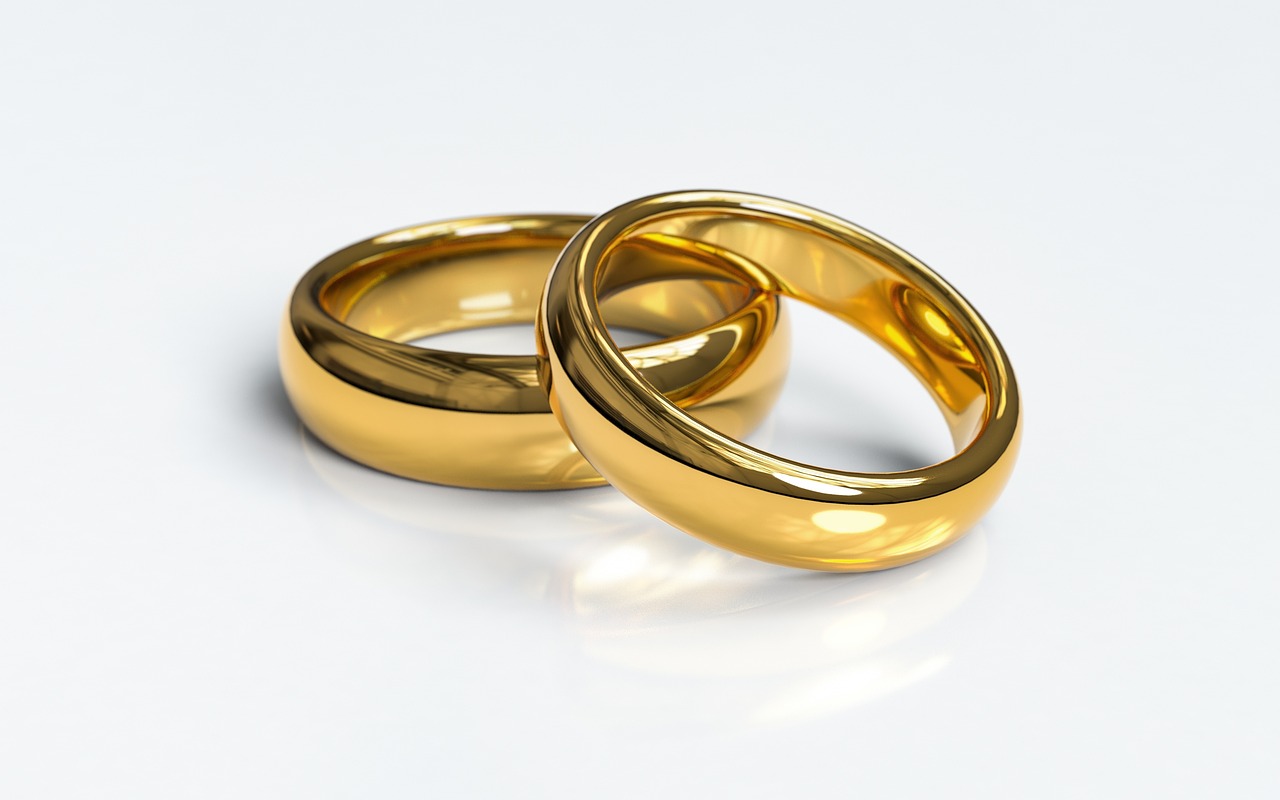
Jewelry in the Middle Ages
The Middle Ages, spanning roughly from the 5th to the late 15th century, marked a significant transition in jewelry design. This period was characterized by a profound influence from religion and social status, which played pivotal roles in shaping the styles and materials used in jewelry-making.
During this time, jewelry was not merely an accessory; it was a reflection of one’s faith and position within society. The use of religious symbols became prevalent, with pieces often adorned with crosses, saints, and other ecclesiastical motifs. These designs served not only as decorative elements but also as tokens of devotion, allowing wearers to express their faith publicly. For instance, pendants featuring religious figures were commonly worn by both clergy and laypeople, signifying their commitment to their beliefs.
In addition to religious influences, jewelry also became a clear indicator of social class. The wealthy elite showcased their status through elaborate designs that incorporated precious materials such as gold, silver, and a variety of gemstones. The craftsmanship of this era was remarkable, with skilled artisans creating intricate pieces that often featured filigree work and enameling. These techniques not only enhanced the beauty of the jewelry but also demonstrated the wearer’s wealth and taste.
| Material | Significance |
|---|---|
| Gold | Symbol of divinity and wealth |
| Silver | Indicator of social status |
| Gemstones | Represented various virtues and beliefs |
In conclusion, the jewelry of the Middle Ages was deeply intertwined with the cultural and religious fabric of the time. It served as a powerful medium for expressing both faith and identity, reflecting the complexities of a society where religion and social hierarchy were paramount. This era laid the groundwork for future developments in jewelry design, influencing styles that would emerge in the Renaissance and beyond.
Religious Symbolism in Jewelry
During the Middle Ages, jewelry transcended mere adornment, becoming a profound expression of faith and devotion. This period, characterized by its deep religious convictions, saw the emergence of jewelry that prominently featured religious symbols. These symbols were not only decorative but also served as a means of spiritual connection and a reflection of one’s beliefs.
Jewelry pieces such as crosses, medallions, and reliquaries were commonly worn by individuals as a testament to their faith. The cross, in particular, became a powerful emblem of Christianity, symbolizing the sacrifice of Jesus Christ. Many wore it as a protective charm, believing it could ward off evil and bring divine favor.
Moreover, the craftsmanship of these pieces often involved intricate designs that conveyed religious narratives. For example, enamel work and gemstone inlays were employed to depict scenes from the Bible or to showcase saints, making each piece a miniature artwork that told a story of faith.
Jewelry was also used in liturgical settings, where clergy and church officials adorned themselves with elaborate pieces during services. These items not only signified their religious authority but also served to inspire awe among the congregation. The use of gold and precious stones in these pieces highlighted the divine connection and the importance of the church in medieval society.
In addition to personal devotion, jewelry served as a social marker. Wealthy individuals often commissioned custom pieces that displayed their faith while simultaneously showcasing their status. This dual purpose of jewelry as both a spiritual and social symbol was a defining characteristic of the era.
In conclusion, the religious symbolism found in jewelry during the Middle Ages reflects a complex interplay between faith, artistry, and social hierarchy. These pieces not only fulfilled a decorative purpose but also served as vital expressions of personal devotion and communal identity, illustrating how deeply intertwined jewelry and religion were during this significant period in history.
Jewelry as Status Symbols
During the Middle Ages, jewelry emerged as a significant marker of social class and wealth. This period saw a fascinating evolution in the design and purpose of jewelry, reflecting the complex social hierarchies of the time. Wealthy individuals adorned themselves with elaborate pieces that were not just decorative but also served as status symbols.
The intricate designs of jewelry during this era were often crafted from precious metals and adorned with gemstones, showcasing the owner’s wealth and taste. Gold and silver became highly sought-after materials, symbolizing not only wealth but also power and influence within society.
| Jewelry Type | Materials Used | Symbolism |
|---|---|---|
| Necklaces | Gold, Silver, Gemstones | Wealth, Power |
| Rings | Gold, Platinum | Commitment, Status |
| Brooches | Silver, Enamel | Personal Expression |
Jewelry was often passed down through generations, becoming a family heirloom that represented not only personal wealth but also family heritage. This practice reinforced the idea that jewelry was an investment, with high-quality pieces retaining their value over time.
Moreover, jewelry served as a social identifier. Different designs and styles could indicate not only wealth but also one’s occupation and social connections. For instance, members of the clergy wore specific religious symbols in their jewelry, while the nobility often showcased their lineage through intricate family crest designs.
In conclusion, during the Middle Ages, jewelry transcended mere decoration to become a powerful symbol of social status. Its elaborate designs and use of precious materials reflected the wealth and influence of its wearers, making jewelry an enduring representation of class distinctions throughout history.
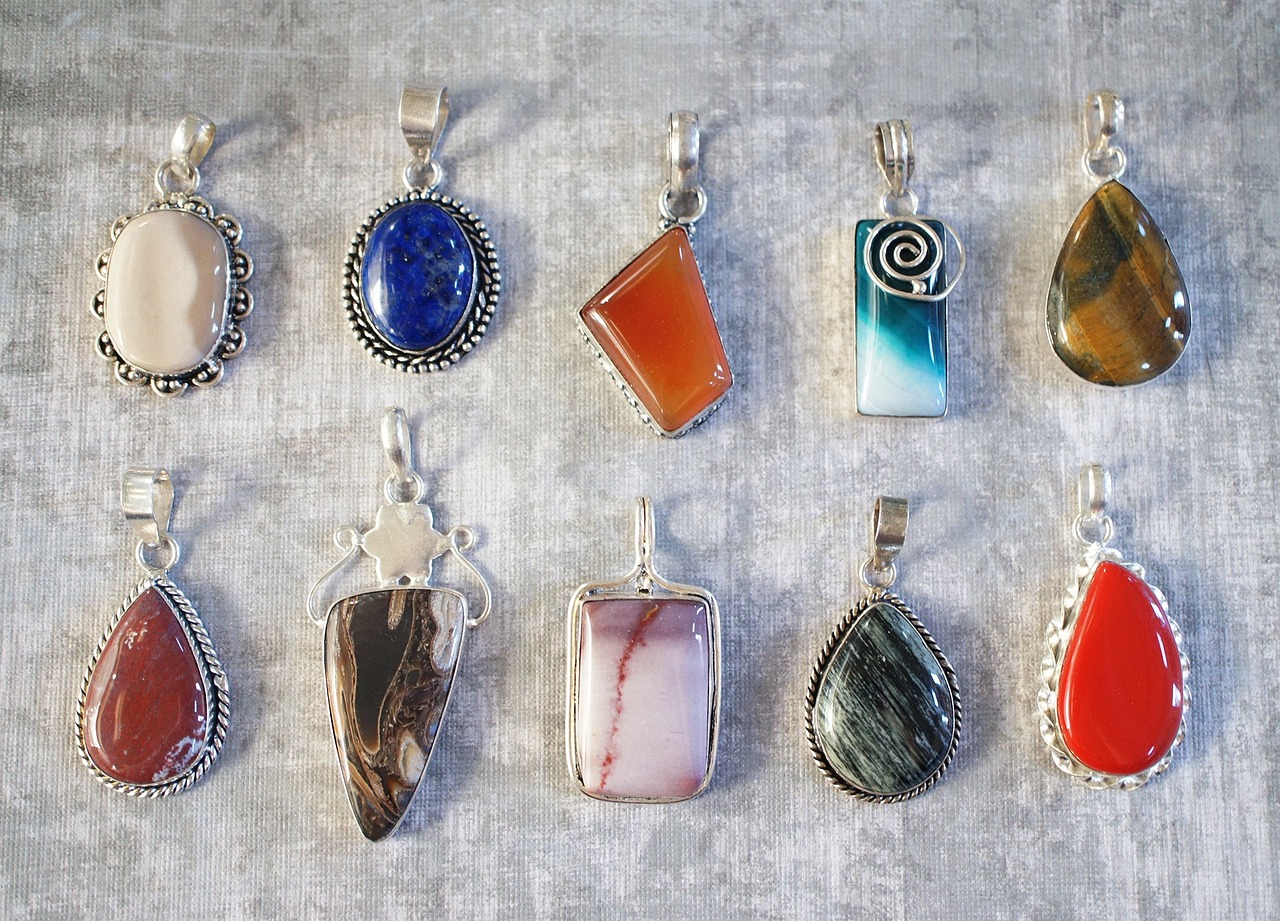
The Renaissance and Baroque Eras
The Renaissance and Baroque eras were pivotal periods in the history of art and culture, and their influence is profoundly evident in the realm of jewelry design. This section delves into how these transformative periods shaped the craftsmanship and aesthetics of jewelry making, reflecting the broader cultural revival of the time.
During the Renaissance, which spanned roughly from the 14th to the 17th century, there was a marked shift towards individualism and a renewed interest in the classical art forms of ancient Greece and Rome. Jewelry became more than mere adornment; it evolved into a medium for artistic expression. Artisans began to experiment with new techniques, incorporating intricate designs that showcased their skill and creativity. Pieces often featured gemstones set in elaborate metalwork, emphasizing both beauty and craftsmanship.
- Innovative Techniques: Jewelers began to employ techniques such as engraving, filigree, and enameling, which resulted in more detailed and refined pieces.
- Symbolism: Jewelry often carried deep meanings, with designs symbolizing themes of love, faith, and status, reflecting the values and beliefs of the time.
As we transitioned into the Baroque era, which followed the Renaissance, jewelry design continued to flourish. This period is characterized by its opulence and dramatic flair. Jewelry became even more extravagant, with larger gemstones and ornate designs that reflected the wealth and power of the wearer. The use of pearls, diamonds, and colorful gemstones became prevalent, often arranged in elaborate patterns that caught the eye and conveyed a sense of grandeur.
The Baroque period also saw the emergence of jewelry as a means of personal expression, with pieces designed to convey emotions and sentiments. Engagement rings and lockets became popular, symbolizing love and connection between individuals.
In conclusion, the Renaissance and Baroque eras were transformative periods that left an indelible mark on jewelry design. The emphasis on craftsmanship, symbolism, and personal expression during these times not only enriched the art of jewelry making but also set the foundation for future styles and trends that continue to influence contemporary jewelry design.
Intricate Designs and Techniques
The Renaissance period, spanning from the 14th to the 17th century, was a time of profound cultural and artistic transformation in Europe. This era not only saw advancements in painting, sculpture, and architecture but also witnessed a remarkable evolution in jewelry design. The intricate designs and advanced techniques that emerged during this time reflect the period’s emphasis on craftsmanship and artistic expression.
Renaissance jewelry is characterized by its meticulous detail and the use of innovative techniques that were revolutionary for the time. Craftsmen began to experiment with a variety of materials, including gold, silver, and precious gemstones, which allowed for greater creativity and complexity in design. The use of enameling, for instance, became popular, enabling jewelers to add vibrant colors and intricate patterns to their pieces. This technique not only enhanced the aesthetic appeal but also showcased the skill and artistry of the craftsmen.
Moreover, the Renaissance saw the rise of gemstone cutting techniques that improved the brilliance and clarity of stones. Jewelers developed new cuts, such as the brilliant cut, which maximized the reflection of light, making gemstones sparkle more than ever before. This innovative approach to gemstone cutting was a significant departure from the simpler, more rudimentary styles of previous eras.
In addition to technical advancements, Renaissance jewelry often carried deep symbolic meanings. Many pieces were designed to convey messages of love, loyalty, and status. For example, the use of lockets became popular, often containing portraits or mementos of loved ones, symbolizing affection and remembrance. Similarly, intricate designs featuring floral motifs or mythological themes reflected the era’s fascination with nature and classical antiquity.
Overall, the Renaissance period marked a pivotal moment in the history of jewelry making, where artistry and innovation converged to create stunning pieces that are still celebrated today. The legacy of this era continues to influence modern jewelry design, showcasing the enduring impact of Renaissance craftsmanship.
Symbolism of Love and Affection
During the Baroque era, jewelry transcended mere adornment and became a profound expression of love and affection. This period, characterized by its dramatic art and architecture, also influenced the world of jewelry, leading to pieces that were not only visually stunning but also rich in symbolism.
The Baroque style emerged in the late 16th century and flourished until the early 18th century. Jewelry from this era often featured intricate designs and elaborate embellishments, which were meant to convey deep emotional connections. Gemstones such as diamonds, pearls, and colored stones were frequently used, each chosen for their specific meanings and associations with love.
- Diamonds: Representing eternal love, diamonds were often set in elaborate designs to symbolize the unbreakable bond between lovers.
- Pearls: Associated with purity and innocence, pearls were commonly gifted to brides, embodying the hope for a harmonious marriage.
- Colored Gemstones: Each gemstone was believed to carry unique properties; for example, emeralds symbolized rebirth and love, while rubies represented passion and desire.
Furthermore, the use of motifs such as hearts, flowers, and intertwined designs in jewelry served to enhance the emotional narratives behind the pieces. Lockets were also popular, often containing portraits or mementos of loved ones, allowing the wearer to carry a piece of their affection with them at all times.
In conclusion, jewelry from the Baroque era was much more than decorative; it was a powerful symbol of love and affection, intricately designed to reflect the deep emotional ties between individuals. The rich symbolism embedded in these pieces continues to resonate today, reminding us of the enduring connection between jewelry and human emotions.
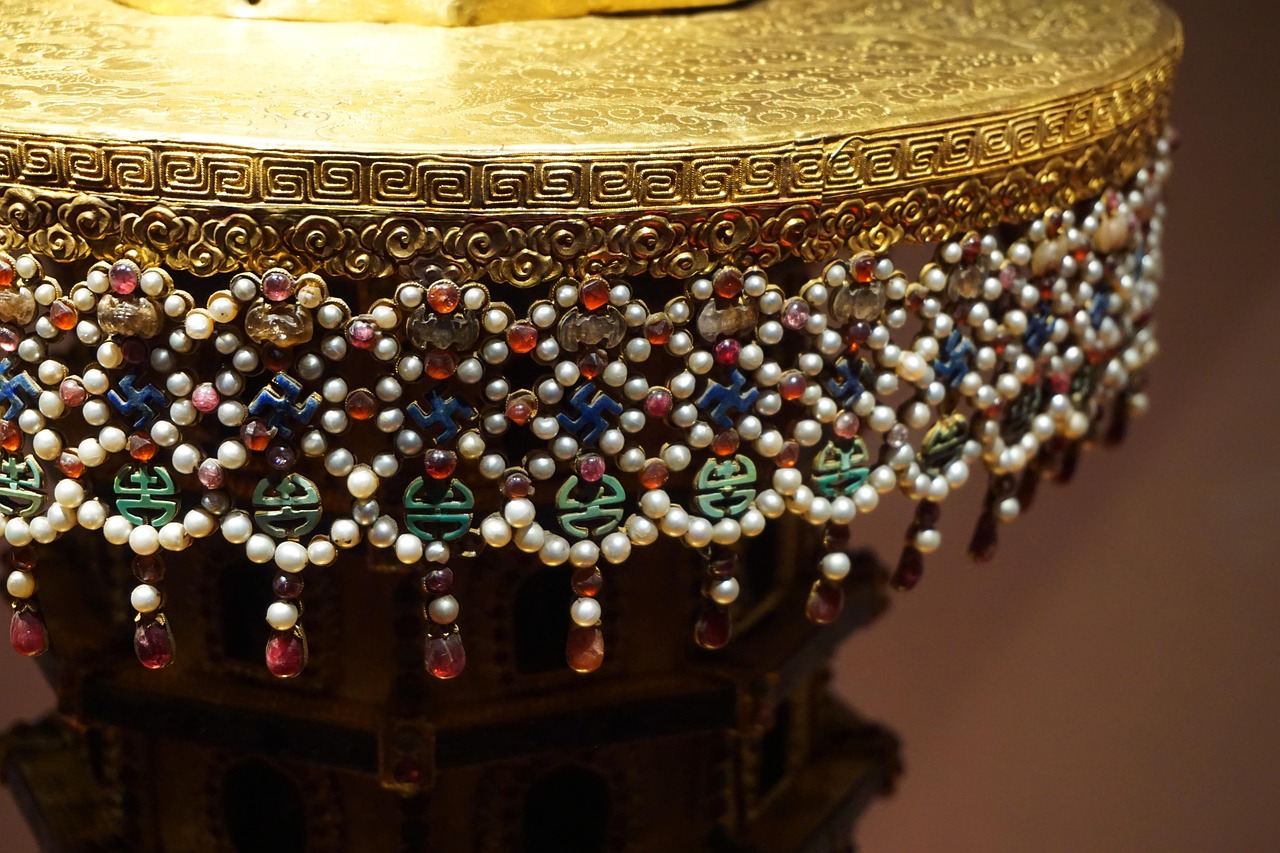
Modern Jewelry Trends
The evolution of jewelry has reached a fascinating point in modern times, characterized by a strong emphasis on personalization and sustainability. As consumers become more aware of their choices, the jewelry industry is adapting to meet these demands, reflecting broader cultural shifts.
One of the most significant trends is the move towards customized jewelry. Individuals are seeking pieces that reflect their unique identities and personal stories. This trend is not just about aesthetics; it encompasses the desire for deeper meanings behind each piece. Consumers are increasingly opting for bespoke designs that incorporate personal elements such as initials, birthstones, or even custom engravings. This shift towards personalization allows wearers to express their individuality and connect emotionally with their jewelry.
In addition to personalization, the focus on sustainability is reshaping the jewelry landscape. As environmental concerns grow, many consumers are prioritizing ethically sourced materials. This includes the use of recycled metals and lab-grown gemstones, which minimize the ecological impact of mining. Brands that emphasize sustainable practices are gaining popularity, as they resonate with consumers’ values and commitment to environmental stewardship.
Moreover, the rise of ethical jewelry has led to increased transparency within the industry. Consumers are now more inclined to research the origins of their jewelry, seeking brands that provide clear information about their sourcing practices. This trend is not just a passing phase; it reflects a profound cultural shift towards responsible consumerism.
Technological advancements also play a crucial role in modern jewelry trends. The integration of 3D printing and digital design has revolutionized the way jewelry is created. These technologies allow for intricate designs that were previously impossible, enabling designers to push the boundaries of creativity. Additionally, they streamline the production process, making it more efficient and accessible.
In conclusion, the modern jewelry landscape is a dynamic blend of personalization and sustainability. As these trends continue to evolve, they not only redefine the way we perceive jewelry but also underscore the importance of individual expression and ethical practices in our purchasing decisions.
The Rise of Ethical Jewelry
In recent years, there has been a significant shift in consumer behavior, with a growing emphasis on ethical practices within the jewelry industry. As individuals become more aware of the environmental and social impacts of their purchases, the demand for sustainable jewelry has surged. This transformation is not just a trend; it reflects a deeper understanding of the implications of sourcing materials and the importance of transparency in the production process.
Ethical sourcing refers to the practice of obtaining materials in a manner that is not only environmentally sustainable but also socially responsible. This means ensuring that the materials used in jewelry, such as gold, silver, and gemstones, are mined or produced without causing harm to the environment or exploiting workers. As consumers increasingly prioritize these values, brands are responding by adopting more responsible sourcing practices.
One of the key aspects of ethical jewelry is the use of recycled materials. By utilizing existing resources, jewelers can significantly reduce the environmental impact associated with mining new materials. This approach not only conserves natural resources but also minimizes waste. Additionally, many brands are now offering lab-grown gemstones, which provide a conflict-free alternative to traditionally mined stones.
Moreover, the rise of ethical jewelry has led to increased consumer education about the origins of materials. Shoppers are now more inclined to ask questions about the supply chain and demand transparency from brands. This shift in mindset encourages jewelers to provide detailed information about their sourcing practices, fostering a culture of accountability within the industry.
In conclusion, the rise of ethical jewelry signifies a broader movement towards conscious consumerism. As more individuals recognize the importance of ethical sourcing, the jewelry industry is evolving to meet these demands. By prioritizing sustainability and transparency, both consumers and brands can contribute to a more responsible and equitable future.
Technological Innovations in Jewelry Design
In recent years, the jewelry industry has witnessed a remarkable transformation driven by technological advancements. These innovations have not only enhanced the design process but also expanded the possibilities for creativity and personalization in jewelry-making. This section delves into how 3D printing and digital design are revolutionizing the future of jewelry.
3D Printing: A Game Changer
3D printing technology has emerged as a game changer in jewelry design. This process allows designers to create intricate and detailed pieces that were once impossible to achieve using traditional methods. With the ability to produce complex geometries and unique patterns, 3D printing enables a level of customization that caters to individual tastes and preferences.
- Rapid Prototyping: Designers can quickly create prototypes, allowing for faster iterations and refinements.
- Material Versatility: 3D printing supports a wide range of materials, including metals, plastics, and even biodegradable options.
- Cost Efficiency: By reducing waste and minimizing the need for extensive tooling, 3D printing can lower production costs.
Digital Design: The New Frontier
Digital design software has also transformed the way jewelry is conceptualized. Programs like CAD (Computer-Aided Design) allow designers to visualize their creations in a virtual environment before physical production. This not only enhances precision but also facilitates collaboration between designers and clients.
Moreover, digital design enables:
- Enhanced Visualization: Clients can see realistic renderings of their pieces, making it easier to make informed decisions.
- Customization Options: Digital tools allow for easy modifications to designs, ensuring that each piece is truly unique.
- Integration with E-commerce: Digital designs can be easily showcased online, expanding market reach and customer engagement.
Conclusion
The integration of 3D printing and digital design into the jewelry-making process is not just a trend; it represents a fundamental shift in how jewelry is created and perceived. As technology continues to evolve, the potential for innovation in jewelry design is limitless, promising an exciting future for both designers and consumers alike.
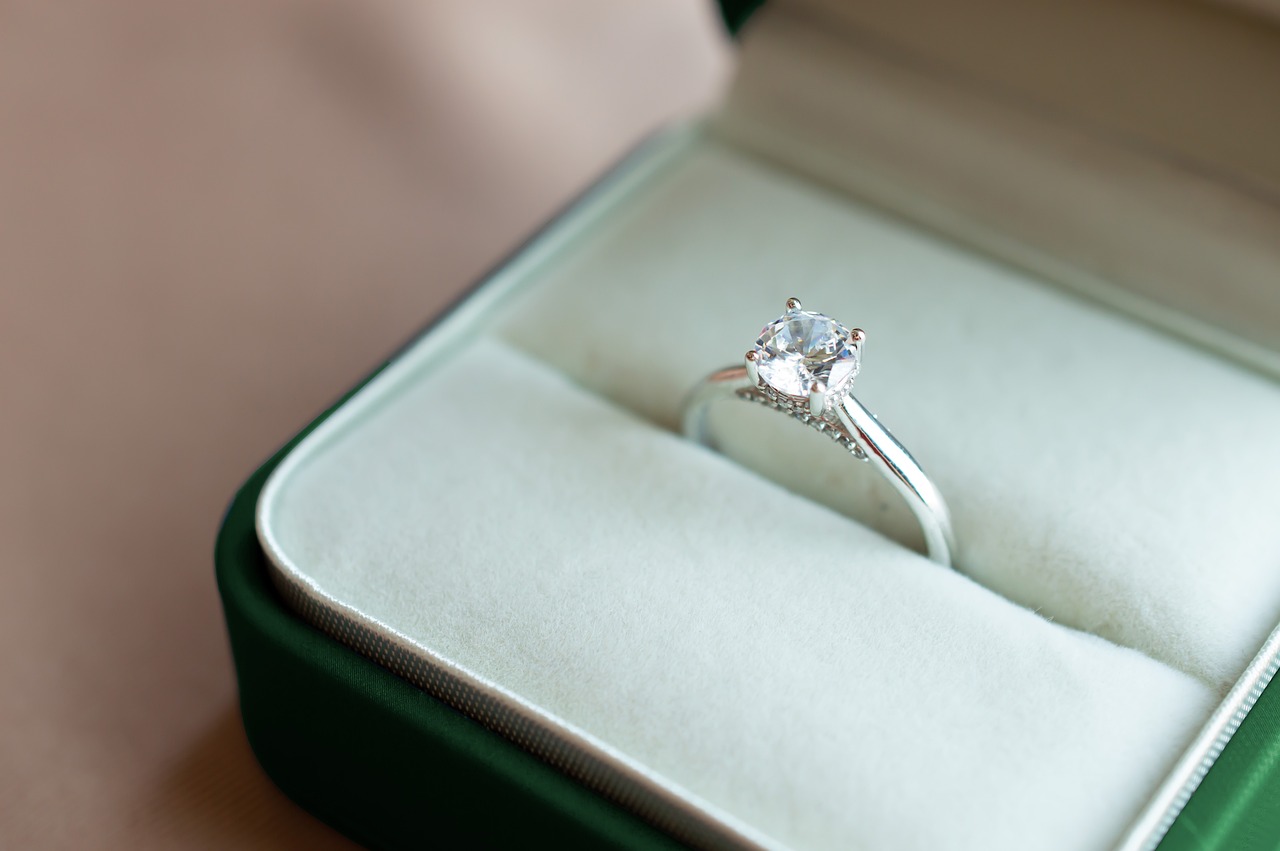
Conclusion: The Timelessness of Jewelry
Jewelry has a rich and storied history that spans thousands of years, transcending cultural boundaries and evolving in both design and significance. While the materials and styles may have changed, the core essence of jewelry as a means of personal expression and a marker of cultural identity has remained remarkably consistent.
From the earliest days of human civilization, jewelry has been utilized not only as a decorative accessory but also as a symbol of status and wealth. In ancient societies, pieces crafted from natural materials like shells and stones were often imbued with protective qualities, reflecting the beliefs and values of the time. As civilizations advanced, so did the materials used, with metals like gold and silver becoming increasingly prominent due to their beauty and rarity.
Throughout history, jewelry has served various purposes, from religious symbols in the Middle Ages to expressions of love during the Renaissance. These pieces often conveyed deep meanings, allowing wearers to communicate their beliefs and emotions without uttering a word. For instance, in Ancient Egypt, gold jewelry was not just a luxury; it was a representation of the divine and the afterlife, showcasing the intricate relationship between adornment and spirituality.
In modern times, the significance of jewelry has expanded to include themes of personalization and sustainability. Today’s consumers are increasingly aware of the ethical implications of their purchases, leading to a rise in demand for ethical jewelry that is sourced responsibly. This shift reflects a broader cultural movement towards sustainability, demonstrating that jewelry continues to evolve while retaining its fundamental role in expressing identity and values.
In conclusion, jewelry is more than mere decoration; it is a timeless testament to human creativity and cultural diversity. Its ability to adapt to changing societal norms while maintaining its significance as a form of personal expression and cultural identity underscores its enduring appeal. As we move forward, the evolution of jewelry will undoubtedly continue, reflecting the values and aspirations of future generations.
Frequently Asked Questions
- What is the significance of jewelry in ancient cultures?
Jewelry in ancient cultures was not just a fashion statement; it symbolized status, wealth, and protection. It often had religious or spiritual meanings, serving as a connection to the divine or as amulets for protection.
- What materials were commonly used in early jewelry?
Early jewelry was crafted from natural materials such as bones, shells, and stones. As societies evolved, precious metals like gold and silver became more prevalent due to their beauty and rarity, marking a shift in jewelry’s significance.
- How did the Middle Ages influence jewelry design?
The Middle Ages saw jewelry take on religious symbolism, often featuring crosses and other religious motifs. Additionally, it became a clear indicator of social class, with elaborate designs showcasing wealth and power.
- What trends define modern jewelry today?
Modern jewelry trends emphasize personalization and sustainability. Consumers are increasingly interested in ethical sourcing, and technological innovations like 3D printing are transforming how jewelry is designed and produced.
- Why is ethical jewelry important?
Ethical jewelry is significant because it promotes responsible sourcing and production practices. As consumers become more conscious of the environmental and social impacts of their purchases, the demand for sustainable options continues to rise.

